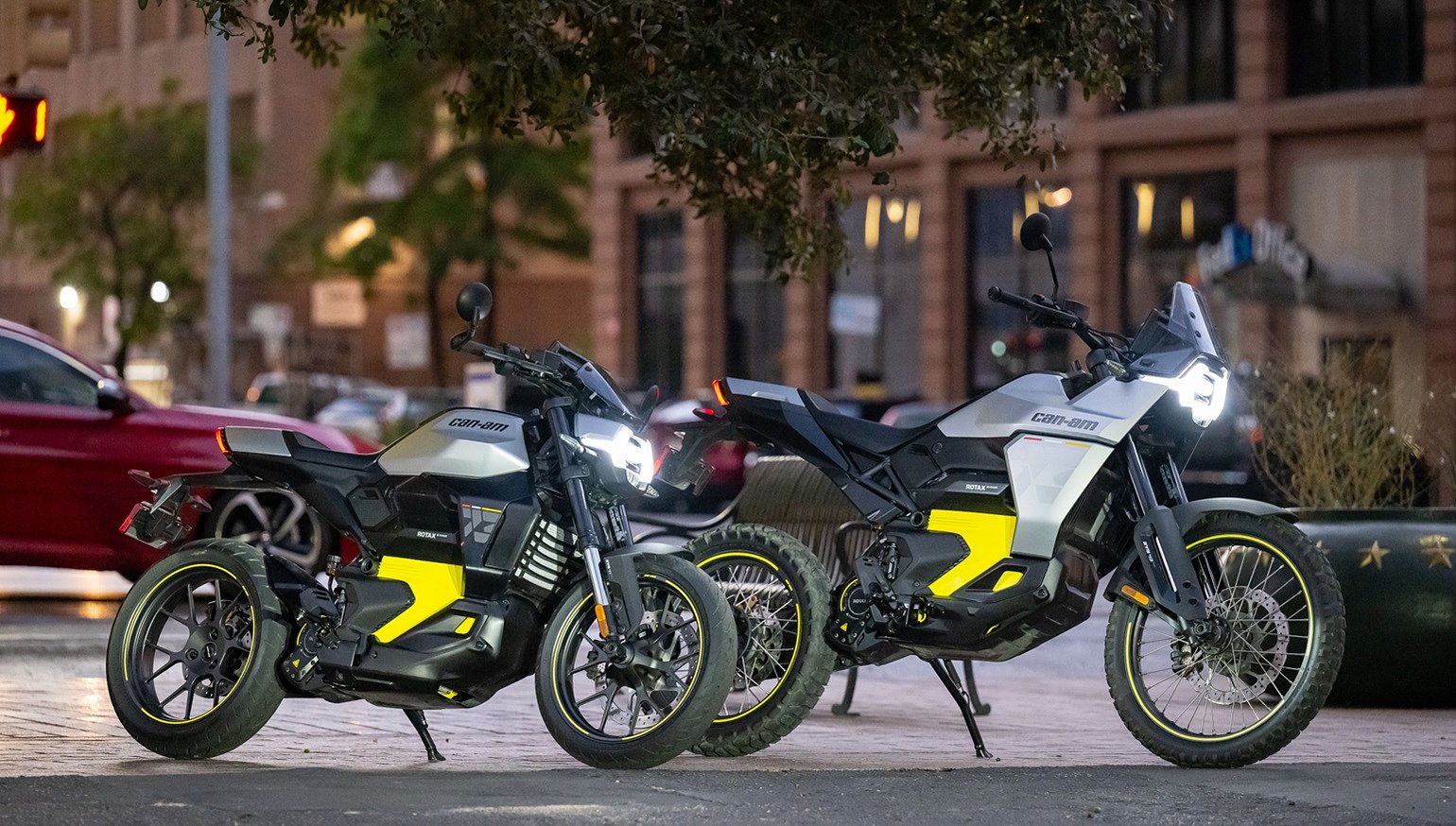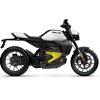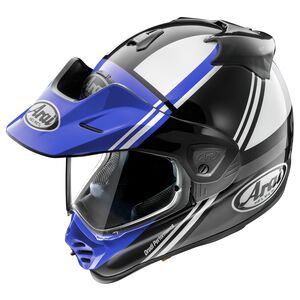Can-Am is one of those brands that resonates for, let's say, a certain generation.
A child of the 1970s, Can-Am came into being as a way to keep Bombardier's production lines rolling when they weren't busy making snow machines — a relentlessly seasonal sport. At first, Can-Am was able to leverage the expertise of BRP's own companies, including engine maker Rotax, to great effect, which made it possible to begin the project in 1970 and have a ready-for-sale product by late 1972. Can-Am was immediately successful in motocross and enduro racing, racking up championships and individual wins in part on the strength of the Rotax disc-valve two-stroke.
It was a good run that lasted through 1987, by which time the Japanese manufacturers had taken the mantle from everyone else, including such storied brands as Husqvarna. Can-Am hasn't built a motorcycle since. Until now.
Which might make you wonder why this reemergence into the two-wheeled world comes in the form of these bikes, the $13,999 Pulse and the $14,499 Origin. (Incidentally, I'll occasionally talk about them here as one because they share a good deal of the platform, including the entire propulsion system.) After all, the rest of the BRP lineup, including the Can-Am trikes, side-by-sides, and ATVs all make liberal use of Rotax's gas engines. Why, then, an electric pair?
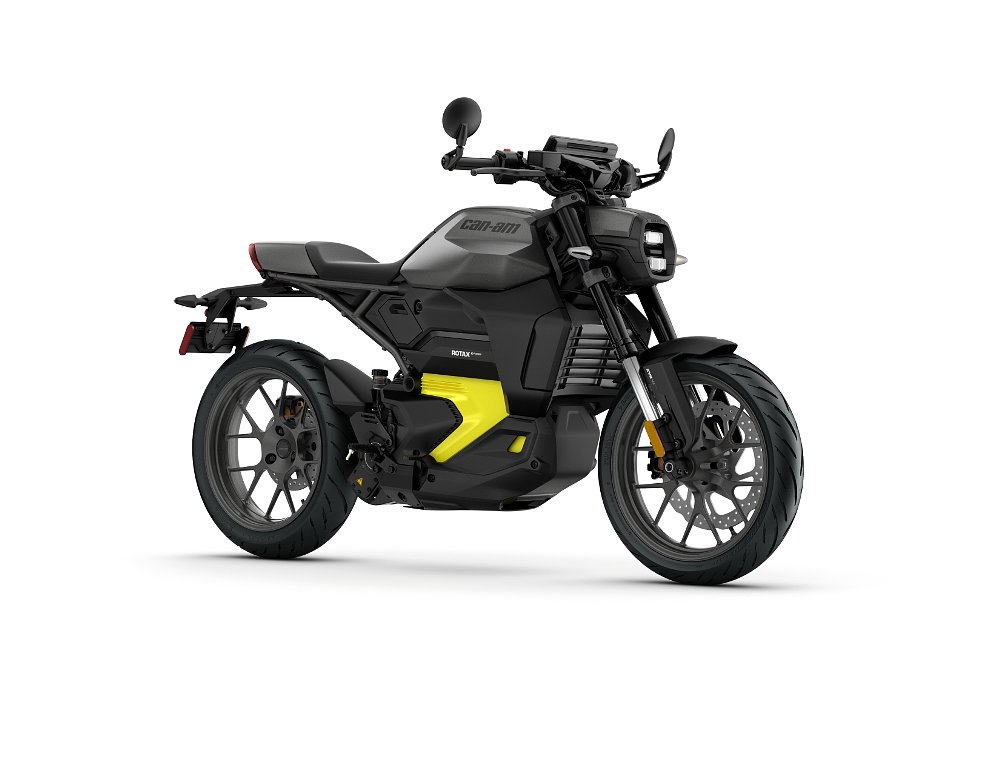
Can-Am points to the future, noting that both the interest in and the actual proliferation of electric bikes has been on the rise over the last decade. Urban riders, in particular, have an interest in electric propulsion, which makes sense when you consider the use case: Leave home, ride to work or school, perhaps make a quick side trip, ride home, recharge. Here, with not too many miles between stops, it doesn't take a lot of range for the vehicle to be practical. There you have the reason for the Pulse.
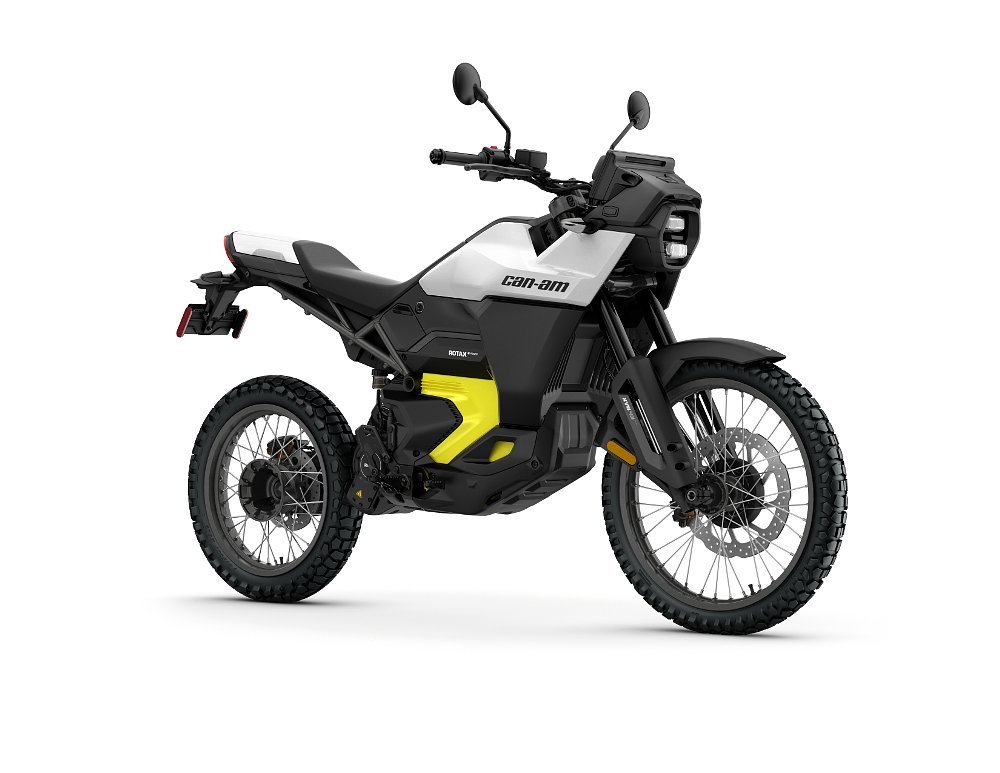
But how do you explain a legitimately good dual-sport bike built off the same platform — with the same limitations — as the other half of the launch series? History. Simple as that. Can-Am made a name in the dirt so a street-only line would be, as they say, woefully off brand. It needed something to harken back to the giddy days of Can-Am competition victory, a feel-good form factor and something potentially more fun than a get-to-work commuter bike. So we have the Origin, which gives the whole plot away just in the name.
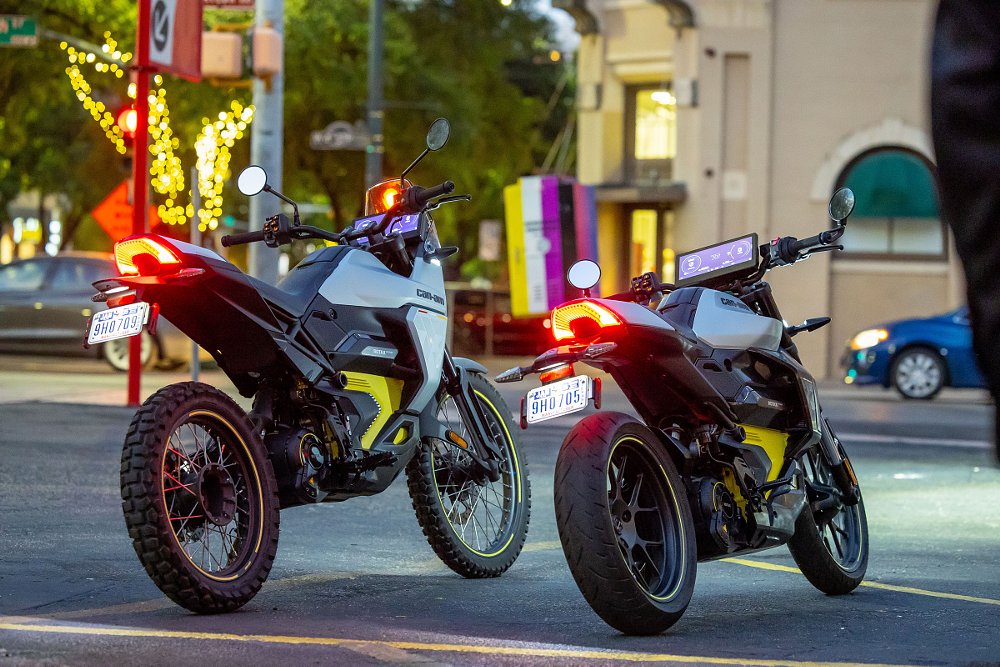
Can-Am Origin and Pulse: The hardware
Let’s pause the marketing discussion and look more closely at what these things really are. For Can-Am's first electric motorcycle, there's a large central, er, blob. You could call it the spine but it's more than that. Right down the middle of the bike, extending from the belly nearly to the bottom of the faux fuel tank, is a cooling channel that separates two segments of the 350-volt battery pack. The pack itself is built by BRP from commercially available cells and has a total capacity of 8.9 kWh. Recharging comes via a J1772 socket, the current industry standard for smaller vehicles, enabling Level 1 and Level 2 charging. According to Can-Am, either bike can recharge from 20% to 80% capacity in 50 minutes on Level 2 or in a bit over three hours on Level 1. (Level 1 is like plugging into a conventional house socket. Level 2 is more like a dedicated home charging station that uses 220 volts.) Times from empty to full charge are 90 minutes on Level 2 or just over five hours on Level 1, which means plugging in at home overnight will do the job without any additional charging infrastructure. Range? Well, I'll get to that.
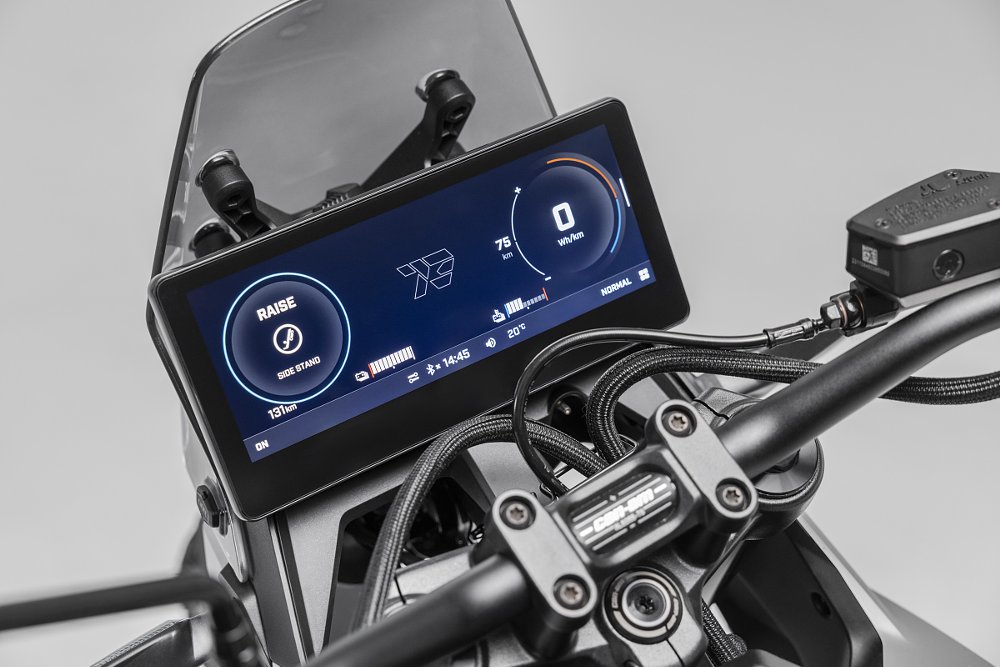
Everything around this battery/electronics core, painted vivid yellow to call attention to itself, is designed and built by BRP. There's a specialized inverter/controller just to the side and a 6.6 kW charger stacked on top. Like the battery pack itself, both the controller and charger are liquid-cooled. Even better, in an attempt to reduce weight and packaging footprint, each unit is connected to the battery pack seamlessly, meaning there are sealed ports for the coolant and contacts for the electrical connection; this reduces the number of hoses and heavy wires running from component to component.
The only hoses are to be found between the center element and the twin radiators (plus a tiny electric pump) and the swingarm-mounted motor. Interestingly, the electric coolant pump makes a gentle puttering like a teeny-tiny gas engine, which some of us on the press launch in Austin thought was a form of recalling premix propulsion from the early Can-Ams, a palimpsest of the riotous Rotax smokers. Alas, it was just a coincidence.
You might ask why liquid cooling in the first place? If you've followed battery-electric vehicles of any kind, you probably know that batteries are finicky, sensitive to temperature swings in terms of efficiency and prone to loss of lifespan if overheated repeatedly. Can-Am is taking every step to keep all the electronics working in a narrow temperature band to preserve both efficiency (range) and battery life.
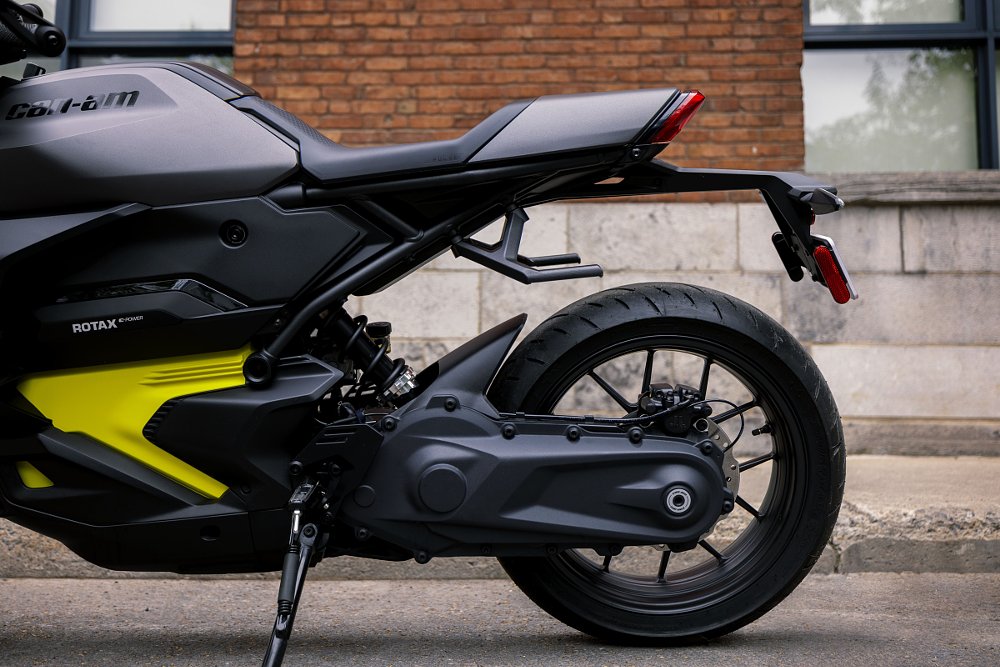
All of this in service of a 47-horsepower motor (with 53 foot-pounds of torque) snuggling up behind the battery pack and the swingarm pivot. Yes, the motor is unsprung weight, but it's really close to the pivot and so contributes nothing deleterious to suspension action. It's positioned to provide a measure of anti-squat and, perhaps just as important, allows the use of a single integrated motor/drive assembly that's nearly maintenance free. (The first event is an oil change at 4,000 miles.) A Hy-Vo-style metal chain runs inside a sealed, oil-filled chamber. This style of chain is intrinsically pretty quiet and it's especially so when locked up inside the housing that also makes up the entirety of the single-sided swingarm. Incidentally, this assembly is the same for both the Pulse and the Origin, meaning the taller-tired Origin has effectively taller gearing.
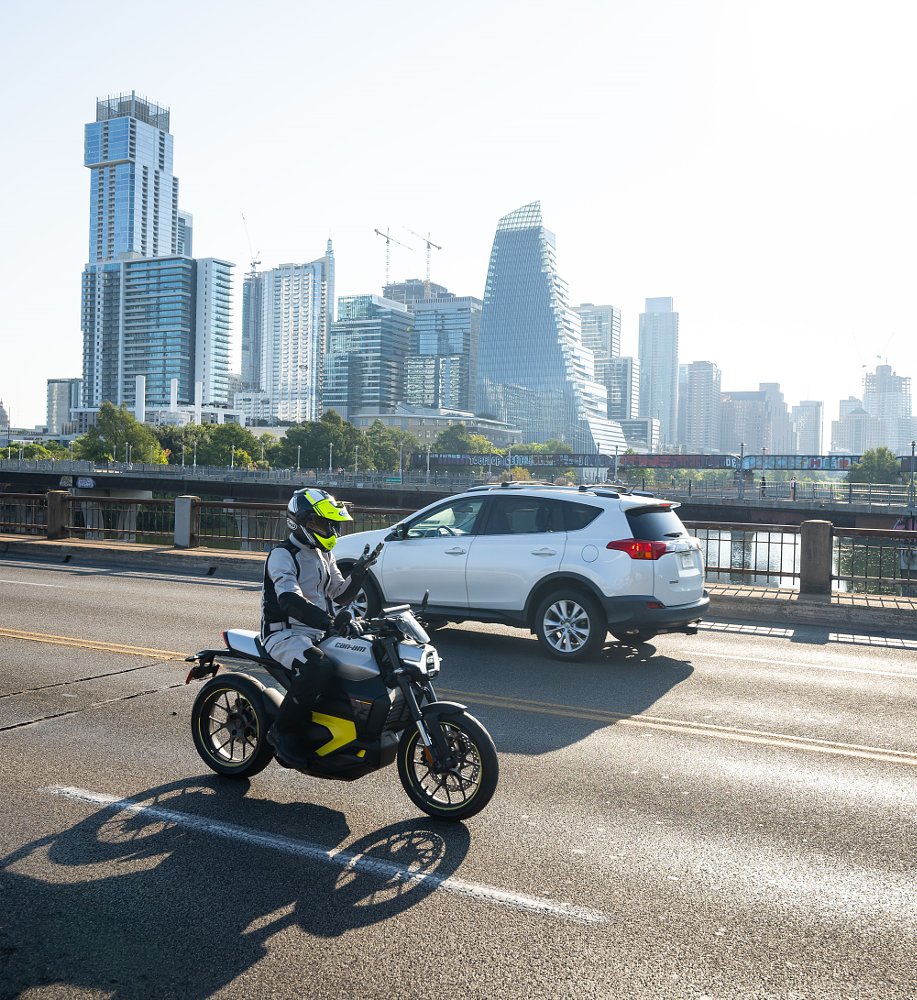
Riding the Can-Am Pulse and Origin
So we start from a common core — electronics, battery, motor, driveline — and diverge from there. The Pulse is described as a sporty commuter, a single-seater for your daily grind. (Both bikes, in fact, come to the U.S. market as monopostos, with tiny passenger pads and footrests optional.) In some ways, the Pulse is a smartphone with wheels, since the 10.25-inch display dominates the low-rise tubular handlebar. The bright display is somewhat customizable and compatible with wired Apple CarPlay for now. In addition to a large digital/analog speedometer, you get a large range display with a graphic representation of power use — into the orange arc when you're consuming power, down into the blue arc when you're using regeneration to put some back into the battery. There's also a trend indicator to show if you're using more or less energy currently (sorry!) than previously in the charge cycle. Keep it toward the plus side, and you're "gaining" range. In fact, the initial range display is based on previous riding styles and conditions, so it might not represent a good read on your next ride. It's entirely possible to have the range stick on one number for a while if you've just completed a long highway ride but are now in the urban environment, whose stop-and-go nature is much easier on power consumption.
And that's where the Pulse is happiest. The generous low-end torque of the electric motor makes it feel much punchier than the 47 peak horsepower would indicate. That grunt is available from zero revs and is really well delivered in most of the ride modes. For the Pulse, you get four: Sport+, Normal, Eco, and Rain. Each one tailors throttle response, traction-control settings and ABS thresholds. Normal is fine but Eco takes so much punch out of the delivery that it feels positively feeble. I wouldn't recommend this mode if you need to dodge automobiles frequently.
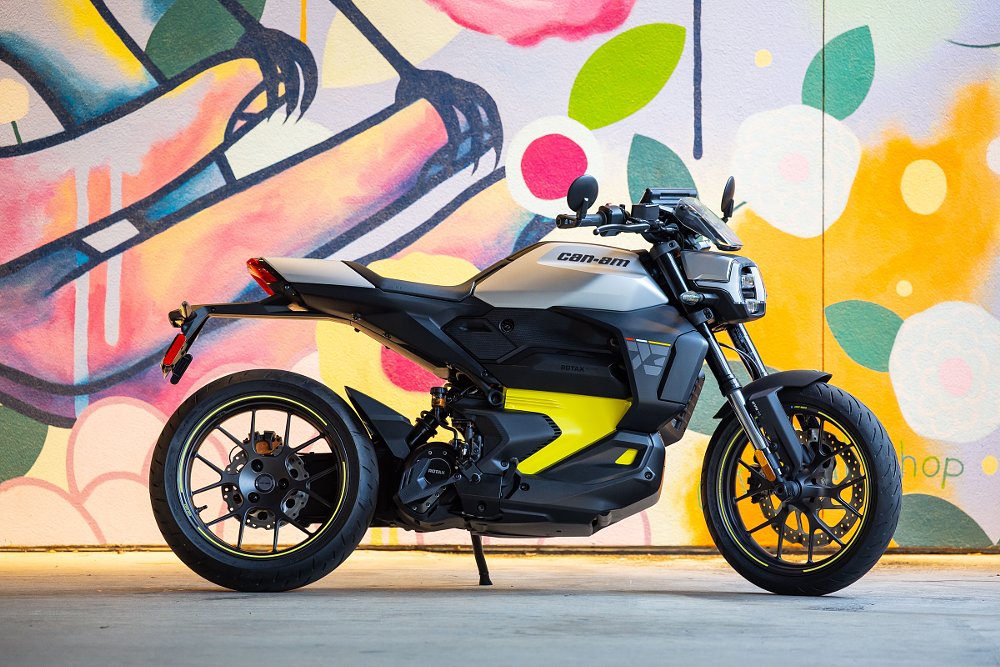
During our ride, we experimented with them all and then set it to Sport+, never looking back. Here, the Pulse is a hoot, with great low-end grunt, excellent drivability and enough leeway in the TC to have a tiny bit of fun. Rolling on 17-inch wheels, the Pulse turns well and needs little effort at the grips but you do feel its claimed 390 pounds. Like a lot of electric bikes, it feels physically small but quite dense. The geometry (55.6-inch wheelbase, 27.2 degrees of rake) says "let's party" but the mass says "hold up, bro, not so fast."
For its part, the KYB suspension is calibrated on the firm side for urban use. It's never harsh, which came as something of a surprise, but it's really quite tamped down, more than you'd find on, say, a Japanese lightweight. Perhaps this is some of Can-Am's racing heritage coming through. If the bike were jittery over typical urban pavement, this would be a miscue, but it's not so, um, it's not.
Two items do stand out, though, both concerning ergonomics. While the riding position is a good compromise between urban control and some forward lean for highway use, the seat is hard and hard-edged. And that big display's location right on the close-in upper triple clamp is hidden from view by your helmet's chin bar. I asked around and it wasn't just my Arai XD-5's chin piece. I can understand not wanting to loft the display above the handlebar, but this aesthetic consideration has practical ramifications.
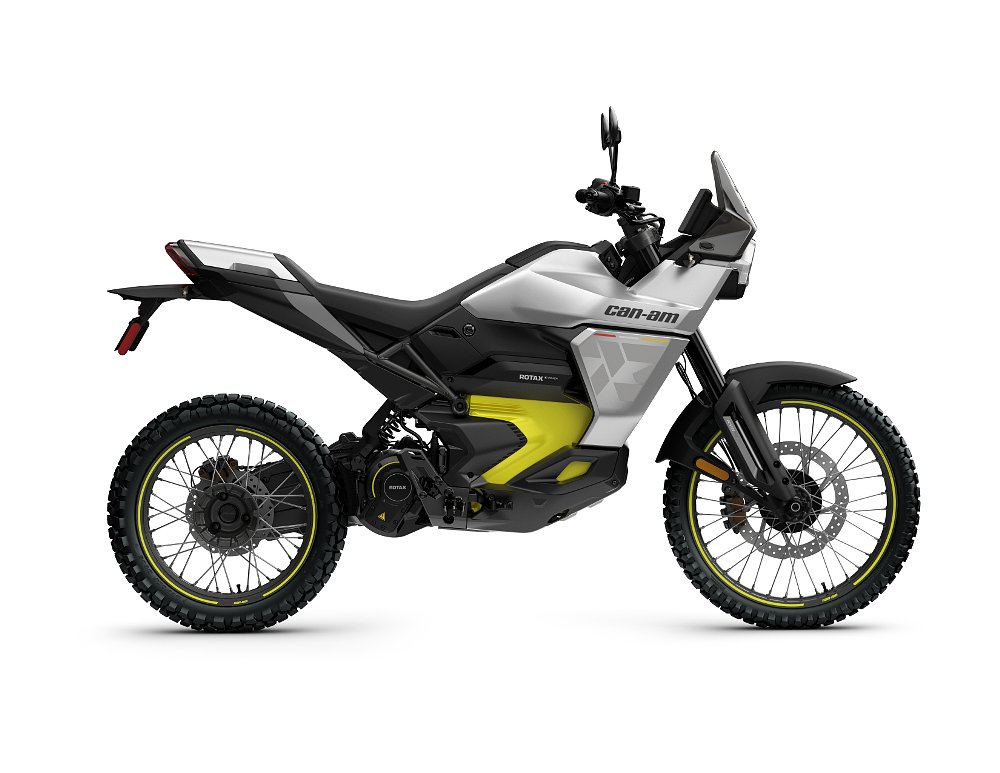
Overall, the Pulse is a nice piece of work, well suited for the stated mission, but it's the Origin that is even more compelling. If you take the Pulse's core, so to speak, and fit it with ADV-inspired bodywork, longer-travel suspension (10 inches to the Pulse's 5.5) and dirt-ready wheel sizes, then you have the Origin. Stock, the Origin wears Dunlop D605 knobbies on its 21-inch front and 18-inch hoops (tubed, alas), which helps contribute to a 35-inch seat height, some four inches higher than the Pulse's. Fortunately, both saddles are narrow enough that the perceived seat height isn't quite what the numbers suggest; both feel lower and more wieldy.
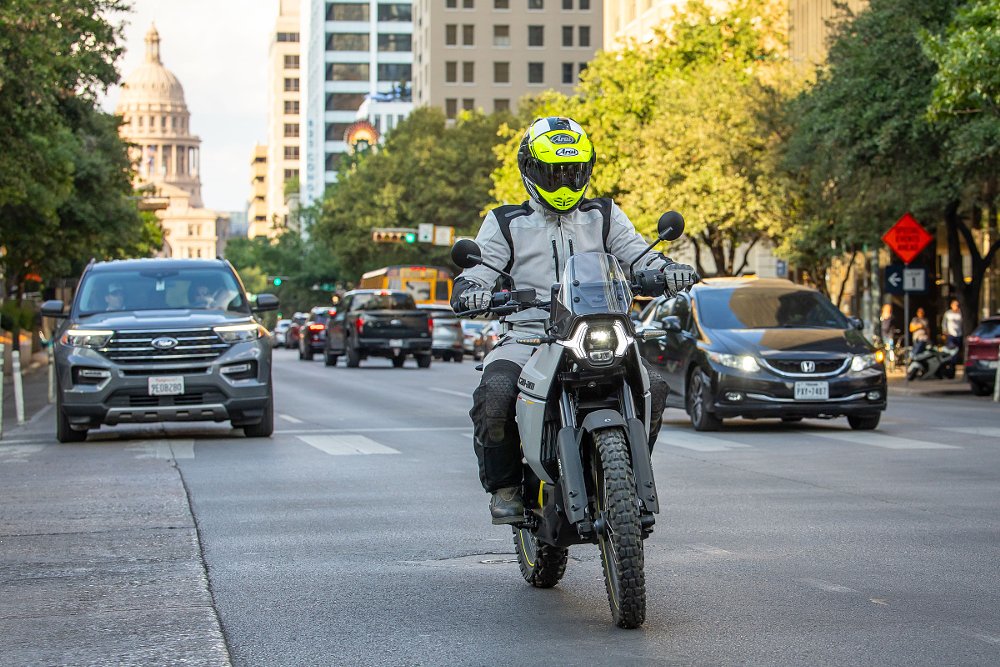
In just about every other way, the Origin is the Pulse writ taller. It has six ride modes, including two dirt-ready modes (both Off Road and Off Road+) that allow varying flexibility on traction control and ABS, including the ability to turn off TC and rear ABS for maximum fun. In place of the Pulse's Sachs shock, it has a fully adjustable KYB, though the fork is non-adjustable. The Origin is also heavier, with a claimed curb weight of 412 pounds. (Since it carries no gas, no reason for a dry weight, eh?) As mentioned, the internal final-drive ratio is the same for both bikes, so the Origin is slightly taller geared overall, but you don't feel too much of it because of all the low-end thrust available.
Nor does the Origin have a lower top speed than the Pulse, but this is for reasons completely unrelated to gearing. Because of the way bikes are rated for range, it's disadvantageous to have a high top speed. The WMTC (World Motorcycle Test Cycle) considers range provided by manufacturers as a function of typical riding, a so-called combined rating. Moreover, we know that low-speed riding consumes a lot less energy than sustained high-speed riding. So a motorcycle with an artificially low governed speed, in this case 80 mph, will see a higher estimated range than the exact same bike with a higher top speed. It's paperwork, pure and simple.
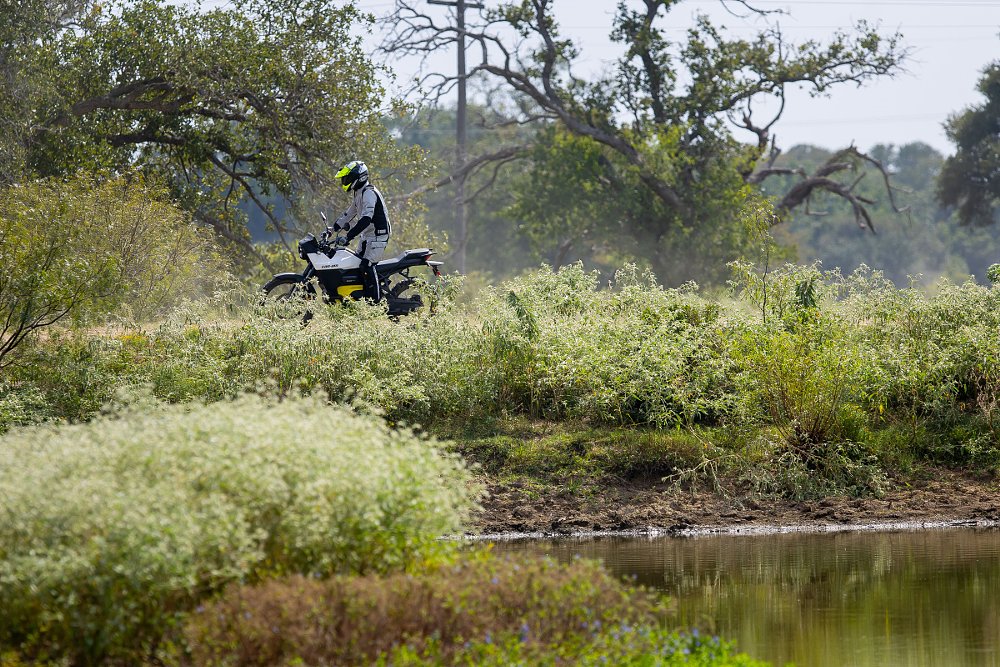
Range: The inevitable electric motorcycle issue
OK, we're here talking about range so it’s time to address the awkward subject at the dinner table. According to Can-Am, the Origin has a WMTC range of 71 miles. It also notes a range of 90 miles in "city" riding and 52 miles at a sustained 50 mph. The lighter, smaller Pulse is a little better: 80 miles on the WMTC scale, 100 miles in the city and 55 miles at a steady 50 mph. There's no magic here. Range is primarily a function of battery size with slight influences from things like motor and inverter efficiency. Can-Am's staff took great pains to explain that the Pulse/Origin twins are a compromise between good handling and light weight on one side and range on the other. They could have stuffed the bikes' bellies full of more cells, but at the cost of both weight and money. Instead, they chose to emphasize performance over range.
This decision — or set of decisions, really — aren't as deleterious to the Pulse as the Origin, which feels like it wants to be a real traveling machine. Ergonomically, it's spot on, roomy without feeling gangly, aerodynamics well managed, and a ride that is also firm like the Pulse's but not even remotely harsh. You never feel that nautical sense you get in some dual-sports. Instead, the Origin is planted, firm, capable and communicative. Its main foible is a tendency to fall into turns initially then resist a bit as you go further in — likely a quirk of the D605s' profiles more than anything else.
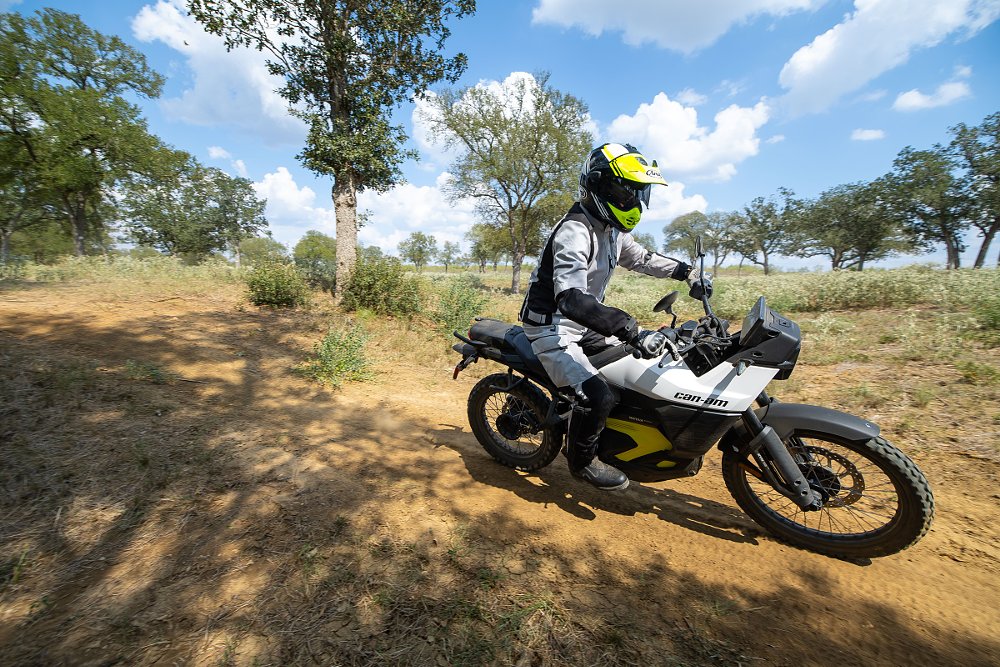
The press launch ride had us on secondary roads much of the time, where the Origin feels perfectly at home. Then we had an hour playing around on a private off-road ranch with a bit of non-threatening single-track among the trees. Here, the Origin was just as much at home. Instant torque, no need to find the right gear, accurate steering and terrific stability over the few lumps and bumps on the course made it instantly confidence-inspiring, despite the near-triple-digit heat. I was sweating profusely but the Origin definitely wasn't.
One knock on electric off-roaders and even auto-trans dual-sports is that it's more difficult to find extra torque to raise or lighten the front wheel to clear obstacles. The Origin has a trick for that. Because it's beneficial to have regenerative braking for range — basically, as you roll out of the throttle, the motor turns into a generator and provides a bit of energy back to the battery pack — the Can-Am twins have a couple of methods. First is passive regen, which can be switched to one of two levels or off, which makes it feel very two-stroke-like. This means as you release the throttle grip, there's some "engine braking."
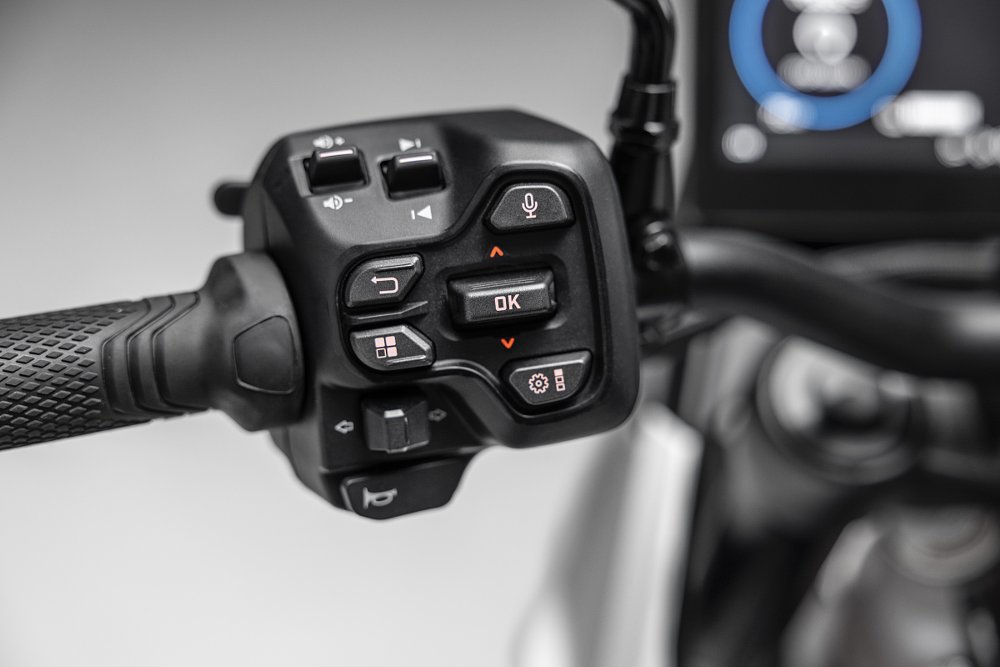
But they also have active regen, which is triggered by taking the throttle "over center." Think of most modern cruise controls that allow you to cancel them by rolling forward on the grip. Here, that movement becomes another layer of regen, also adjustable to high, low, or off settings. And here's the trick. In max active regen, you can roll hard out of the throttle to transfer weight forward and then snap the throttle open to avail yourself of all that torque. The Origin responds beautifully, though it won't hold much of a wheelie as the torque tapers off.
Both modes of regen have quirks. First, when the battery is fully charged, there's no place to put the recovered energy, so active regen is usually not immediately available and passive is less than you'd set it for. We also noted after some spirited running in the Texas heat, the active regen stopped working altogether, which the Can-Am tech guys explained is a way to keep the battery pack's temperature under control. You see, taking power or adding it back creates heat, and once the cooling system has hit capacity, some of the non-core functions need to be temporarily shut down. This last case comes without any notification to the rider, who may be expecting a strong regen action in active and might have to reach for the totally adequate J.Juan brakes unexpectedly.
Perhaps it's the nature of a press launch, where the temptation to act like children is sometimes overwhelming, but none of the bikes appeared capable of their WMTC ranges. My best guess from the riding we did is 50 to 60 miles on the Origin and maybe 60 to 70 on the Pulse, with a mix of don’t-care-about-range riding and a few forays right to the 80 mph limit, which also feels a bit restrictive. On the street portion aboard the Pulse, I gave up on a passing maneuver that looked like I would need a bit more than the governed top speed to complete with some margin. (This is Texas, after all.)
Available range probably works just fine for the core Pulse customer, assuming long weekend trips aren't planned, or are planned with enough downtime to find charging stations along the route. But it's truly unfortunate for the Origin, which feels totally at home roosting through the trees or bounding along secondary roads. It's a really good package that had me fantasizing about the extensive accessories catalog and imagining a sunny weekend back home in Oregon (ha!) riding out to the nearest single-track. Unfortunately, while I could get there on one charge, I couldn't go very far once I got there and definitely would not make it home.
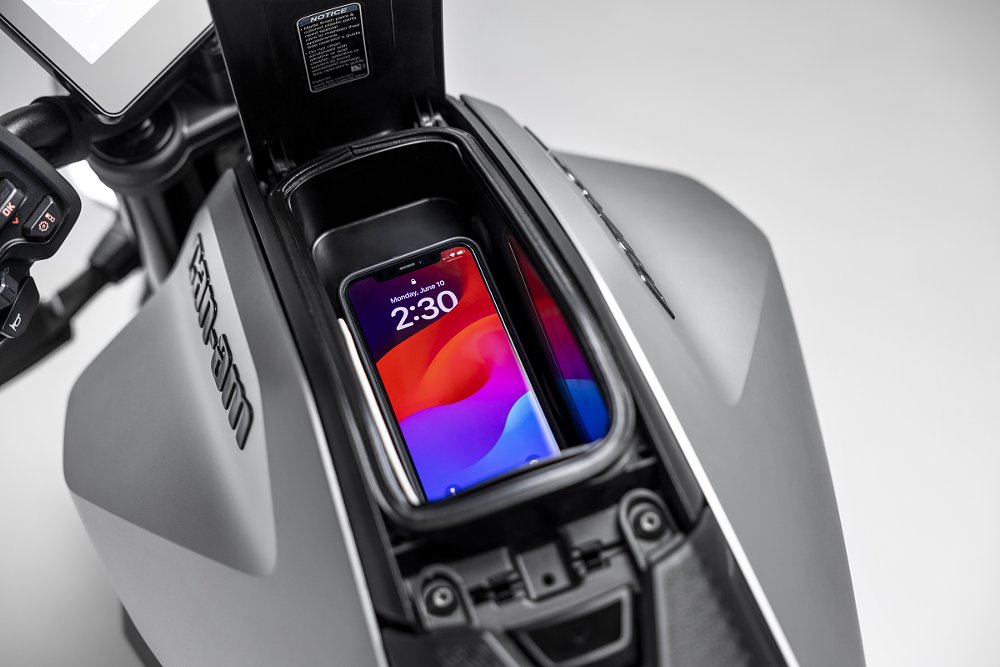
You could argue the problem here isn't so much Can-Am's execution as a lack of technology. Sure, the choice of building around a smaller, lighter battery pack impacts range but would these bikes be as fun to ride with more Duracells under the hood? Maybe this is the platform that, like so many others, is waiting for a big leap in battery technology. For now, we keep our fun close to a power source.
| 2025 Can-Am Pulse | 2025 Can-Am Origin | |
|---|---|---|
| Price (MSRP) |
Bright White: $13,999 Carbon Black: $14,499 Pulse 73: $15,999 |
Bright White: $14,499 Carbon Black: $14,999 Origin 73: $16,499 |
| Drivetrain | Liquid-cooled Rotax EPOWER motor, 8.9 kWh battery, clutchless single speed with reverse, enclosed chain final drive | |
| Claimed horsepower | 47 peak, 27 continuous | |
| Claimed range |
100 miles city 80 miles combined highway/city 55 miles at a sustained 50 mph |
90 miles city 71 miles combined highway/city 52 miles at a sustained 50 mph |
| Claimed battery capacity | 8.9 kWh | |
| Claimed charge time |
20% to 80% @ Level 1: 3:10; 0% to 100% @ Level 1: 5:15 20% to 80% @ Level 2: 50 minutes; 0% to 100% @ Level 2: 1:30 |
|
| Front suspension | KYB 41 mm inverted fork; 5.5 inches of travel | KYB 43 mm inverted fork, 10 inches of travel |
| Rear suspension | Sachs shock, adjustable for preload; 5.5 inches of travel | KYB HPG shock, adjustable for preload, compression, and rebound damping; 10 inches of travel |
| Front brake | Single J.Juan two-piston caliper, 320 mm disc with ABS | |
| Rear brake | J.Juan two-piston caliper, 240 mm disc with ABS | |
| Rake, trail | 27.2 degrees, 3.97 inches | 30 degrees, 4.6 inches |
| Wheelbase | 55.6 inches | 59 inches |
| Seat height | 30.9 inches | 34 inches |
| Tires | Dunlop Sportmax GPR-300, 110/70R17 front, 150/60R17 rear | Dunlop D605, 90/90-21 front, 120/80-18 rear |
| Claimed weight | 390 pounds | 412 pounds |
| Available | Early 2025 | |
| Warranty | Vehicle: 24 months; battery: five years or 31,068 miles | |
| More info | can-am.brp.com | |




